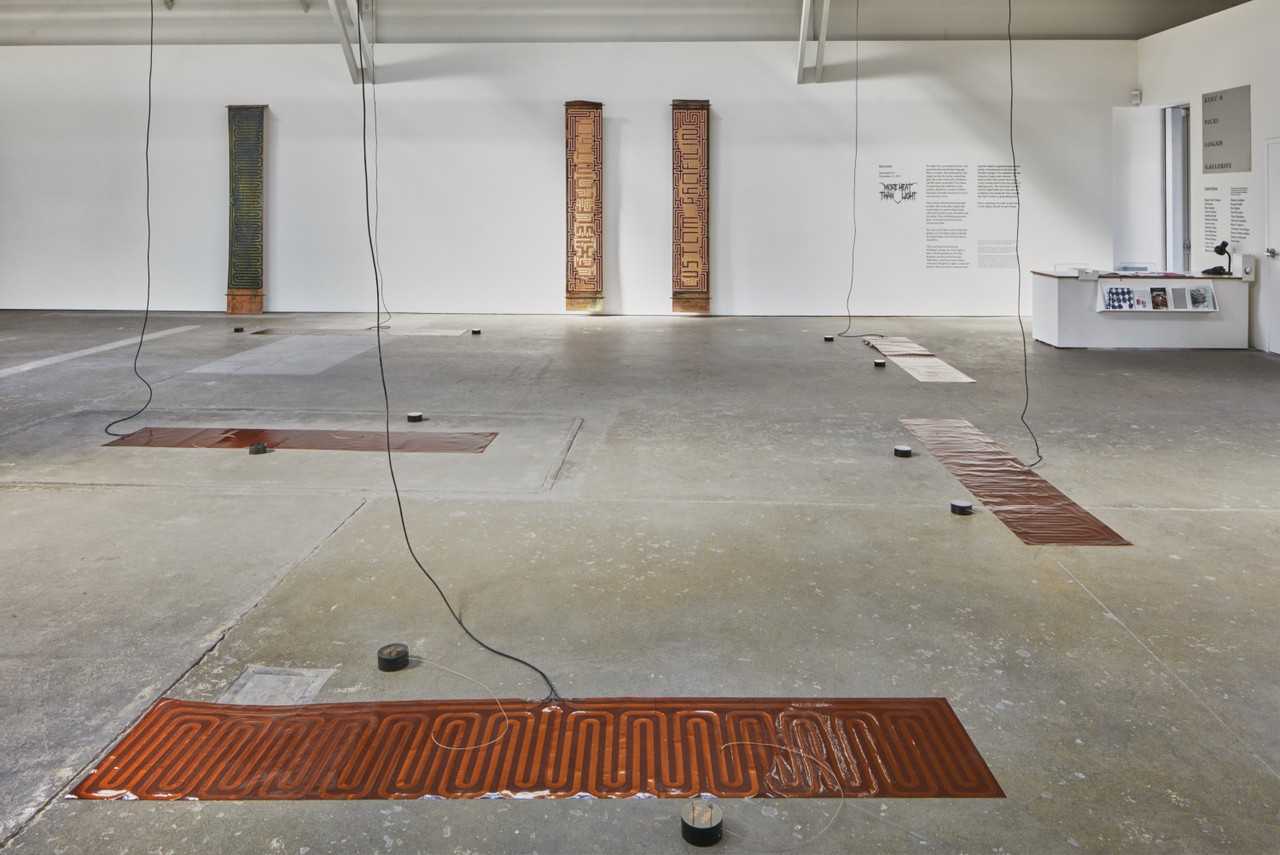Sam Lewitt
More Heat Than Light
10 Sep - 21 Nov 2015

Sam Lewitt
More Heat Than Light, 2015
installation view, Wattis Institute
Courtesy of Sam Lewitt
Photo: Johnna Arnold
More Heat Than Light, 2015
installation view, Wattis Institute
Courtesy of Sam Lewitt
Photo: Johnna Arnold
SAM LEWITT
MORE HEAT THAN LIGHT
10 September –21 November 2015
Curated by Anthony Huberman and co-organized with Kunsthalle Basel
To make fire, you need friction—our ancestors discovered that long ago. More recently, thermodynamics has taught us that the hotter something gets, the more erratically it behaves and the more unreliable it becomes. To guarantee the stability of any system, therefore, means to follow one basic formula: minimize friction and maximize flow.
Sam Lewitt switches that around. His work adds weight and materiality to systems that would otherwise prefer to run smoothly and invisibly. This exhibition generates heat—it maximizes friction and minimizes flow.
The artist has redirected the building’s energy use from light to heat. On the ground are flexible heating circuits Lewitt has had fabricated, which are much larger versions of Kapton/copper composite heaters that are used to maintain and regulate highly targeted temperatures inside communication devices. The objects draw their power from long cords coming down from the gallery’s lighting track. The electricity usually used by light bulbs now runs into the sculptures and along the lines etched into their surfaces, generating heat.
MORE HEAT THAN LIGHT
10 September –21 November 2015
Curated by Anthony Huberman and co-organized with Kunsthalle Basel
To make fire, you need friction—our ancestors discovered that long ago. More recently, thermodynamics has taught us that the hotter something gets, the more erratically it behaves and the more unreliable it becomes. To guarantee the stability of any system, therefore, means to follow one basic formula: minimize friction and maximize flow.
Sam Lewitt switches that around. His work adds weight and materiality to systems that would otherwise prefer to run smoothly and invisibly. This exhibition generates heat—it maximizes friction and minimizes flow.
The artist has redirected the building’s energy use from light to heat. On the ground are flexible heating circuits Lewitt has had fabricated, which are much larger versions of Kapton/copper composite heaters that are used to maintain and regulate highly targeted temperatures inside communication devices. The objects draw their power from long cords coming down from the gallery’s lighting track. The electricity usually used by light bulbs now runs into the sculptures and along the lines etched into their surfaces, generating heat.
